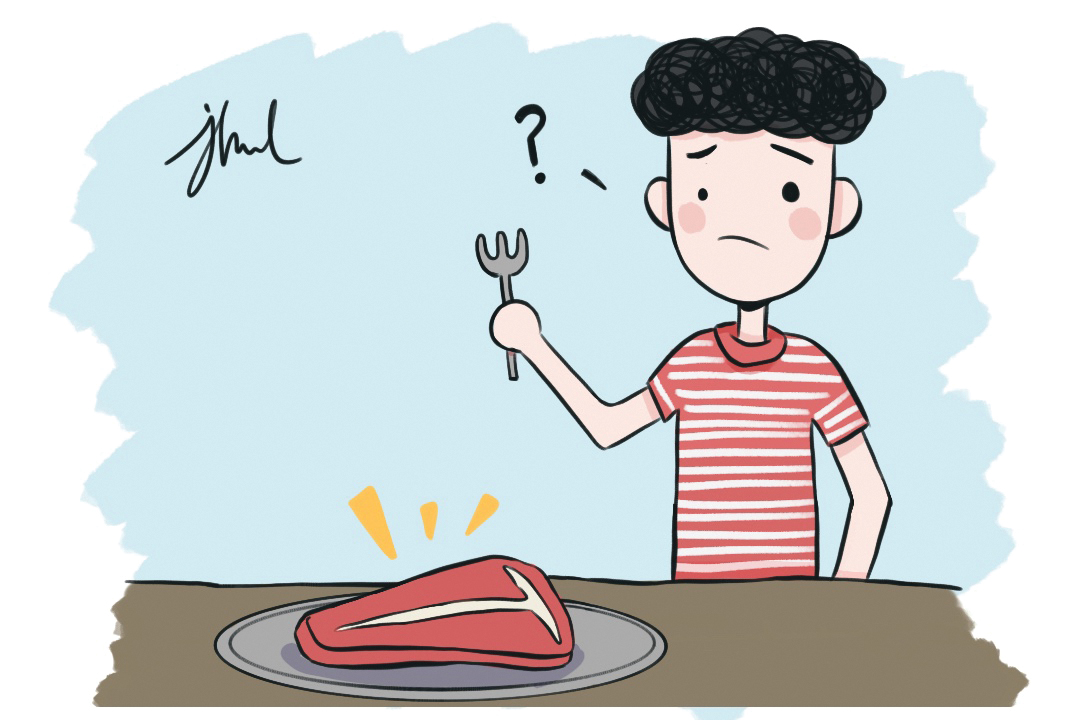If one of your new year’s resolutions was to lose weight, you may have tried a fad diet that required you to restrict your consumption of certain foods or keep to specific dietary practices. Recent fad diets include the paleo diet, intermittent fasting, keto diet, and the gluten-free diet, for those who follow these diets even when there is no medical reason for them to do so. Dr. Christopher Gustafson, an associate professor at the University of Nebraska–Lincoln, theorizes that people are attracted to fad diets because they simplify a complex set of dietary choices into a binary decision — for example, “Does this food have gluten?”
One emerging fad diet is the raw meat diet — a variant of raw foodism, which is a class of diet that involves eating mostly raw and unprocessed foods, and avoiding food that has been genetically engineered or sprayed with pesticides and herbicides. The guiding tenet of raw foodism is the belief that processing and cooking food reduces the potency of food’s life force, making it harmful to our health.
However, for some adherents of the raw meat diet, it is more than just a fad: it’s part of a lifestyle known as ‘ancestral living.’ According to Brian Johnson, who calls himself the “Liver King,” the human body is better suited to this lifestyle — getting lots of sunshine, doing hard physical work, hunting for food, and consuming the whole of an animal, preferably raw. The Liver King eats three to four ounces — roughly 85 to 113 grams — of raw liver with every meal. He claims that ancestral living leads to a connection with our primal selves, resulting in increased strength, health, and happiness. But can we all be Liver Kings?
People all around the world incorporate raw meat as part of their diet, in dishes like sushi, steak tartare, carpaccio, mett, and ceviche. However, the central question for many people remains — is the raw meat-centric diet safe?
The US Food and Drug Administration (FDA) and Health Canada both warn against the consumption of raw meat, recommending that raw meat, poultry, seafood, and egg products should be cooked to a safe internal temperature to destroy any harmful pathogens that could cause food poisoning. The type of pathogens that raw meat may contain varies depending on the practices of the farms, slaughterhouses, and processing plants that handle the meat. The species of the animal and the cut of meat may also affect the types of pathogens it can contain. Some common foodborne pathogens include Salmonella enterica, Escherichia coli, Listeria monocytogenes, and Staphylococcus aureus.
A meta-analysis of the global prevalence of Staphylococcus aureus in raw beef, chicken, and pork products from studies conducted between 2000 and 2016 found that 29.2 per cent of raw meat was contaminated with the pathogen and 3.2 per cent of raw meat was contaminated with a methicillin-resistant version of it.
A study of raw food eaters found a high incidence of amenorrhea, or the absence of menstrual bleeding. It also found a negative correlation between a person’s body mass index and both the proportion of raw food in their diet and the duration they are on their diet.
The odds of amenorrhea and being underweight were similar for meat-eaters, vegans, and vegetarians. Therefore, the correlation between raw food eating and a low body mass index suggests that the cooking of plant and animal products provides crucial energy that would not be conferred by meat-eating alone.
That being said, the evolutionary benefits cooking may provide are hotly — no pun intended — contested. And cooking may have some drawbacks. While it’s essential to ensure meat is safe to eat, cooking may lead to a decrease in nutritional value through the loss of important vitamins and minerals, as well as changes in the meat’s fatty acid composition. The potential losses in nutritional value depend on the time, temperature, and method used to cook the food. Some studies note, though, that cooking your meat does not significantly affect the quantity of minerals in it.
Research suggests there is a greater risk of pathogen contamination at retail outlets, such as grocery stores, than at the slaughterhouse. Therefore, the risk of exposure to pathogens in raw meat can be reduced by buying organic, grass-fed, antibiotic-free meat directly from a farm. However, this kind of meat is often expensive.
Studies have shown that adding lemon juice, garlic, and yogurt to raw meat reduces the meat’s ‘microbial load’ — the amount of pathogens that are in the meat. Keeping the meat intact during preparation rather than cutting it up also helps reduce its microbial load, since intact whole meat is considered internally sterile. These interventions do not eliminate the risk posed by foodborne pathogens completely, though; there is always an element of risk when eating raw meat.
While we could all stand to eat less processed food, a raw meat diet carries a risk of illness that cannot be eliminated. Furthermore, the diet’s much-touted health benefits are currently unsubstantiated. Part of the problem is the limitations of nutritional research, which is largely correlational and thus often cannot establish clear causational relationships. So before you bite into a juicy bloody steak, keep in mind we still need more research to properly explore the long-term effects of raw meat diets.


